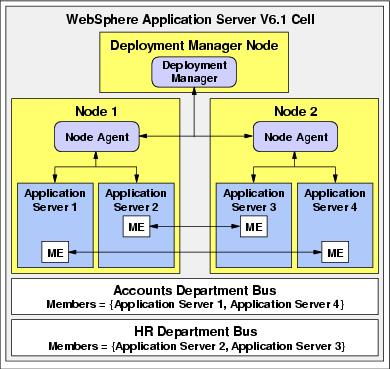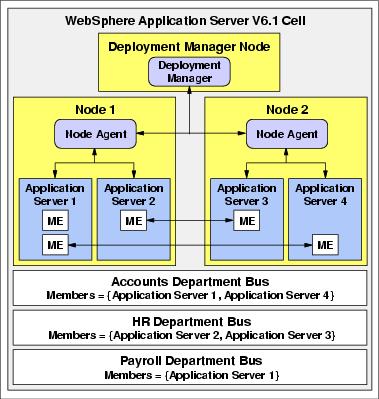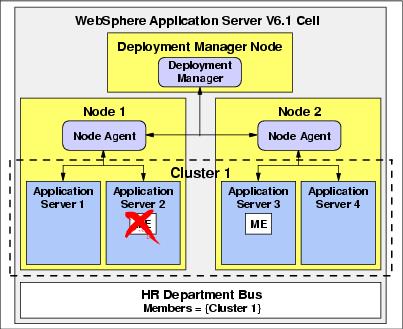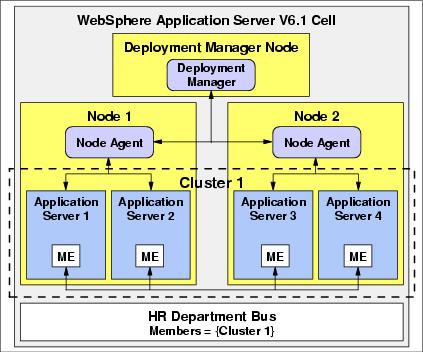Messaging engines
At run time, the messaging engines within a bus communicate provide messaging capabilities, providing a connection point to which client applications can connect.
When an appserver is added as a member of a bus, a messaging engine is automatically created.
A single appserver can host multiple messaging engines and be a member of messaging engines. If an appserver is added as a member of multiple buses.
When a cluster of appservers servers is added as a member of bus, a single messaging engine is automatically created and associated with the cluster, regardless of the number of appservers defined as members of the cluster. At run time, this messaging engine is activated within a single appserver within the cluster. The appserver that is chosen to host the messaging engine will be the first cluster member to start. If the messaging engine, or the appserver within which it is running, should fail, the messaging engine is activated on another available server in the cluster. Therefore, adding an cluster as a member of a bus enables failover for messaging engines that are associated with that cluster.
Once an cluster has been added as a member of a bus, it is also possible to create additional messaging engines and associate them with the cluster. These additional messaging engines can then be configured to run within a specific cluster member, if required. Such a configuration enables a bus to be scaled to meet the needs of applications that generate high message volumes. It also improves the availability of the bus in question.




